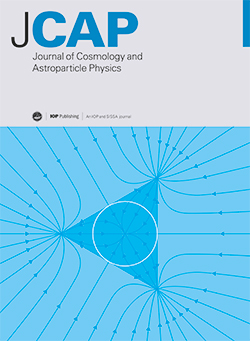Neural Networks for cosmological model selection and feature importance using Cosmic Microwave Background data
IF 5.3
2区 物理与天体物理
Q1 ASTRONOMY & ASTROPHYSICS
Journal of Cosmology and Astroparticle Physics
Pub Date : 2025-02-04
DOI:10.1088/1475-7516/2025/02/004
引用次数: 0
Abstract
The measurements of the temperature and polarisation anisotropies of the Cosmic Microwave Background (CMB) by the ESA Planck mission have strongly supported the current concordance model of cosmology. However, the latest cosmological data release from ESA Planck mission still has a powerful potential to test new data science algorithms and inference techniques. In this paper, we use advanced Machine Learning (ML) algorithms, such as Neural Networks (NNs), to discern among different underlying cosmological models at the angular power spectra level, using both temperature and polarisation Planck 18 data. We test two different models beyond ΛCDM: a modified gravity model: the Hu-Sawicki model, and an alternative inflationary model: a feature-template in the primordial power spectrum. Furthermore, we also implemented an interpretability method based on SHAP values to evaluate the learning process and identify the most relevant elements that drive our architecture to certain outcomes. We find that our NN is able to distinguish between different angular power spectra successfully for both alternative models and ΛCDM. We conclude by explaining how archival scientific data has still a strong potential to test novel data science algorithms that are interesting for the next generation of cosmological experiments.求助全文
约1分钟内获得全文
求助全文
来源期刊

Journal of Cosmology and Astroparticle Physics
地学天文-天文与天体物理
CiteScore
10.20
自引率
23.40%
发文量
632
审稿时长
1 months
期刊介绍:
Journal of Cosmology and Astroparticle Physics (JCAP) encompasses theoretical, observational and experimental areas as well as computation and simulation. The journal covers the latest developments in the theory of all fundamental interactions and their cosmological implications (e.g. M-theory and cosmology, brane cosmology). JCAP''s coverage also includes topics such as formation, dynamics and clustering of galaxies, pre-galactic star formation, x-ray astronomy, radio astronomy, gravitational lensing, active galactic nuclei, intergalactic and interstellar matter.
 求助内容:
求助内容: 应助结果提醒方式:
应助结果提醒方式:


